Today’s reflection art project is all about the build up. Now don’t get me wrong, it will still mesmerize kids even if they know the secret to how it works in advance. But if you build in a little suspense to how you introduce this, you will probably double the oohs and ahhs from kids!
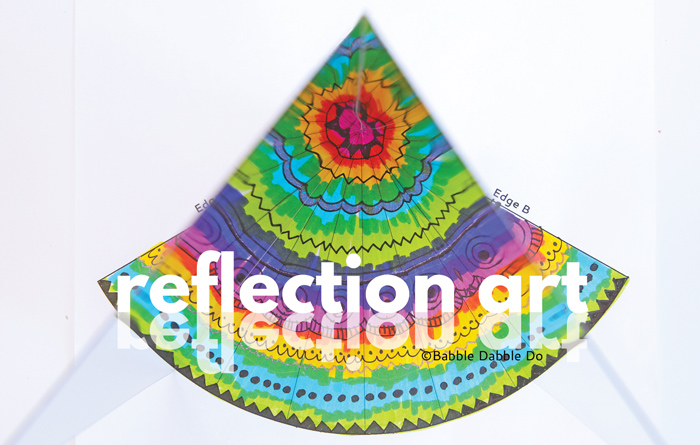
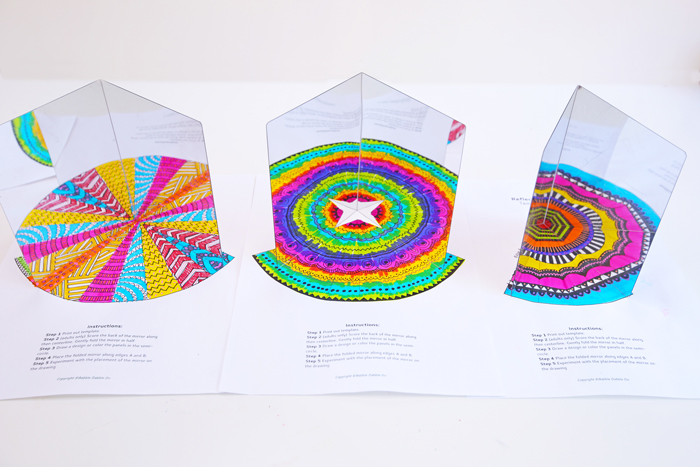
Reflection art is an incredible hands-on lesson in multiplication. Yes, I did say multiplication, as in math. And it also covers geometry, angles, symmetry, in fact there is so much learning tucked into this STEAM project, parents and teachers will feel like you hit the activity jackpot.
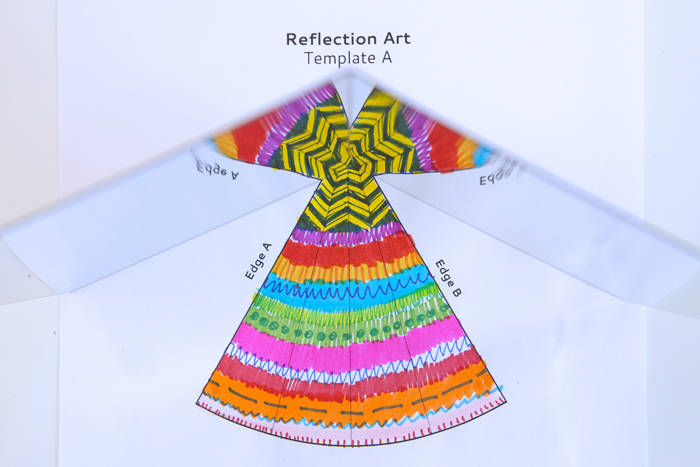
This post contains affiliate links to products.
How To Make Reflection Art
Materials
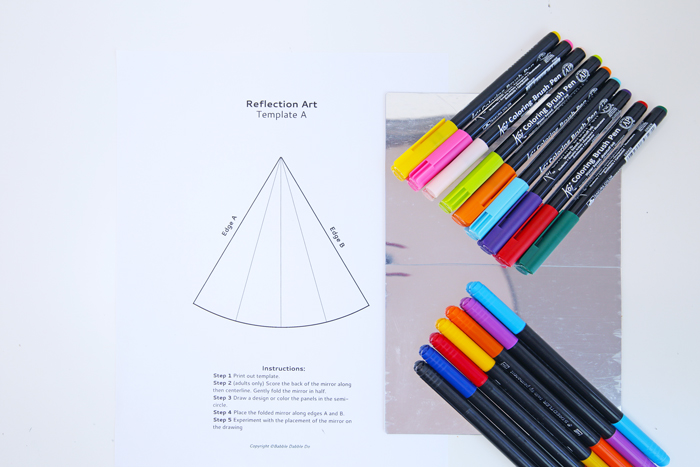
- Template
- Adhesive backed plastic mirrors
- Xacto (adults only)
- Straightedge
- Markers These are some of my fave markers
- Pens
Instructions
Parent/Educator Prep
Tip: We used one folded mirror per child and allowed the children to take them home. If you are on a budget you may make a set of mirrors for kids to share and keep them them afterward to use again.
- Step One Score the back of the mirror along the centerline using an Xacto and straightedge.
- Step Two Carefully bend the mirror at the the score line to create a crisp fold.
- Step Three Cut off sharp corners of mirrors. Remove plastic protective film from mirror face.
Kids/Students
- Step One Doodle/draw/decorate the semi circular “piece of pie” template using markers and/or pens. Make sure to add in some contrast and detail.
- Step Two Give the students a “duplicator” AKA mirror and ask them to match the mirror and template edges. Moving the mirror will create more or less reflections of the drawing.
You’re done! Even our super reluctant students were excited to try this! It was such a fun math art idea exploring symmetry, geometry, angles, and multiplication.
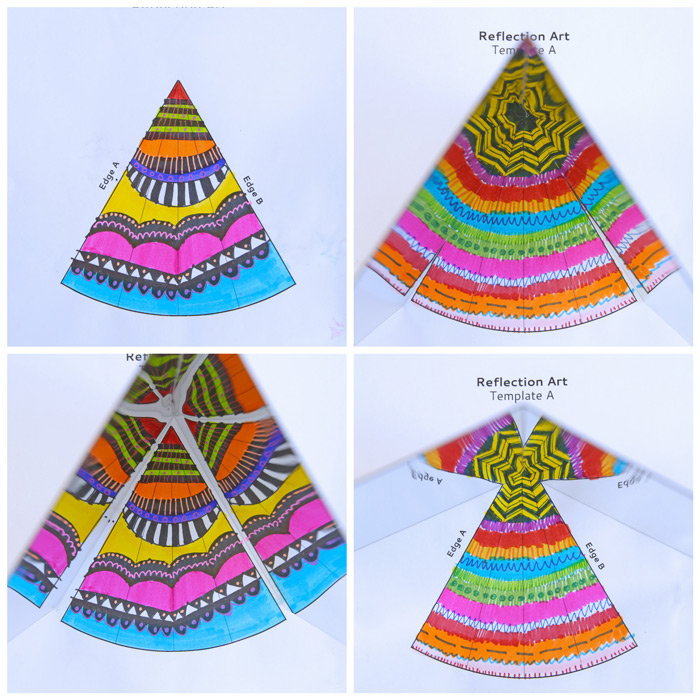
How to Run the Reflection Art Project
Here are our suggestions for running this project so that you get the maximum amount of surprise! Most importantly do NOT tell the kids about the mirrors in advance!
- First we asked the kids to doodle/draw/decorate a “piece of pie” using the template.
- Next we told the kids that we were going to give them a “duplication machine” to turn their slice into a full pie. The “duplicator” was of course the plastic mirror, that had been scored and folded down the middle.
- Finally we gave the kids the mirrors and directed them to start by aligning the mirror edges with the template edges. Afterward we suggested they play around with the placement of the mirror and angles.
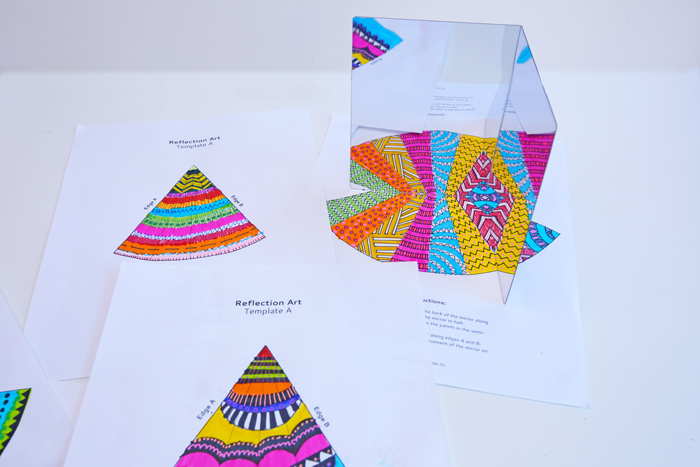
Let’s Talk STEAM
The Math
- Multiplication Multiplication is the concept of repeated addition. One of the reasons we use multiplication is to quickly add up numbers so we don’t have to compute one long addition sentence. It’s a type of math shortcut. Multiplication truly refers to numbers BUT the idea of duplicating an operation via a shortcut to quickly add large numbers is visually illustrated in this project via reflections. In reflection art one slice of pie quickly turns into 2 or 4 or 8 pieces depending on the angle at which you place the mirrors. If you were to draw a full piece of pie it would take a lot of time, just like it takes a long time to compute a long addition sentence. In this project we are multiplying our drawing via reflections. We draw one slice of pie and use a mirror as a shortcut to complete the drawing for us.
- Geometry Geometry is the branch of mathematics that studies the shape, size, position of objects and figures.
- Symmetry In geometry, symmetry describes the quality of a shape or arrangement of shapes and lines that are balanced on either side of an axis. The axis can be a straight line or center point. When shapes are reflected around a center axis they have rotational or radial symmetry. In our project the axis is the fold line of the mirror. From that point everything else is reflected in a circle.
- Angles Angles are measured in degrees. A circle is made up of 360 degrees. When you open and close the folded mirror you are changing the angle. When you open it wide with a large angle you will see fewer reflections than when you close it to form a smaller angle.
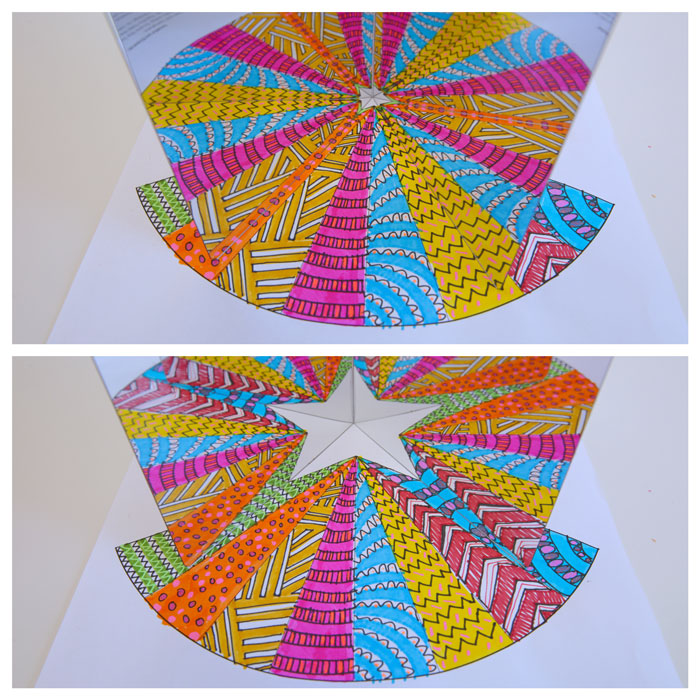
The Art
- Layering In art layering is the building up of color and materials on a surface. In this project increasing the layers of color and design adds more complexity to the final reflected drawing. Start by adding a layer of color on the template. Next add a detail layer in a darker ink using thinner pens. Finally you can add in some color details using gel pens.
- Light and Space The Light and Space movement in art started in Southern California the 1960s. Artists who are considered part of this movement worked with light, reflection, volume, space and layering to create artwork that you often moved through and experienced. Two of my favorite artists from this movement are Robert Irwin and James Turrell, who both play with light and how your eye perceives space when that light changes. Our magic mirrors uses light and reflection to alter the artwork which is why I thought of this art movement when working on this project.
The Science
- Reflection of light When light hits an object it bounces off that object. The more smooth and shiny the surface of the object is, the more the light will be reflected. Mirrors are very smooth and shiny. When light hits them it bounces back off the mirror at the same angle that it hit the mirror and you see the image reflected. This concept is known as specular reflection. The bouncing of light is repeated when you place more than one mirror next to each other. In the case of our folded mirror you are now seeing light and images reflected multiple times between the two mirrored surfaces. When I wrote my book STEAM Play & Learn this was one of my favorite image of my son playing with a folded mirror.
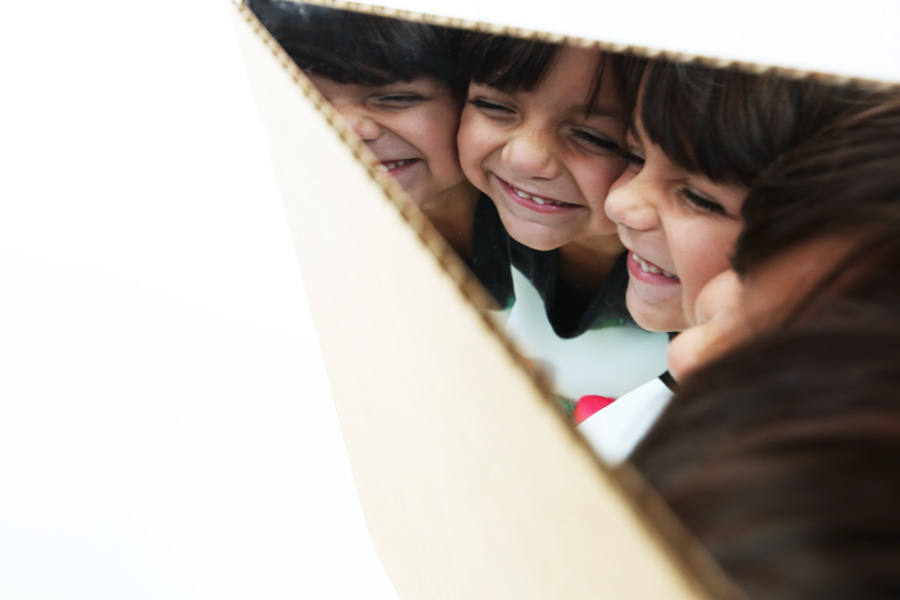
Conclusion & More
I hope your kids have as much fun with Reflection Art as we did! This project reminded me so much of kaleidoscopes and the play of light and color you get when you use mirrors to reflect images infinitely. Go here to learn how to make a DIY kaleidoscope.
And if you enjoy math art projects, here are a few more ideas to try:
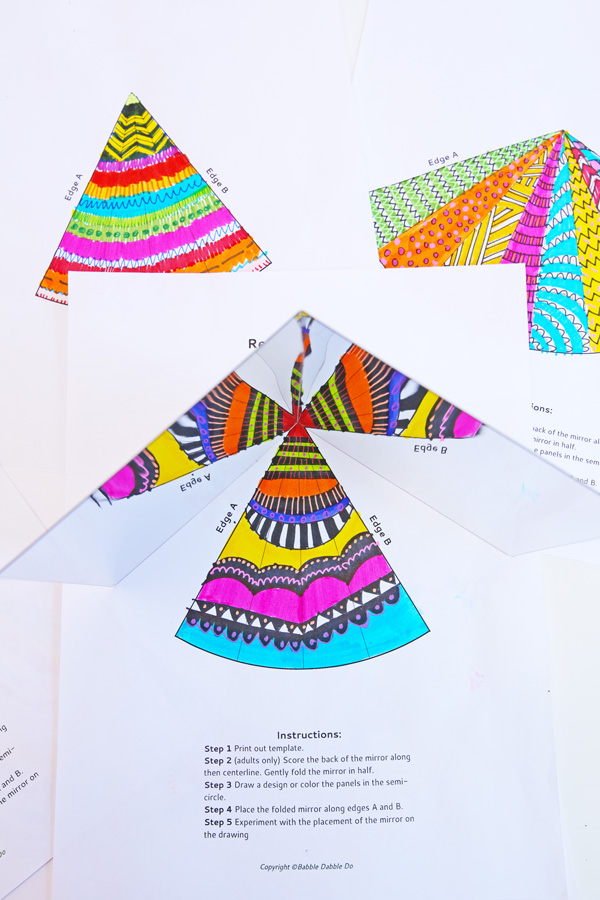
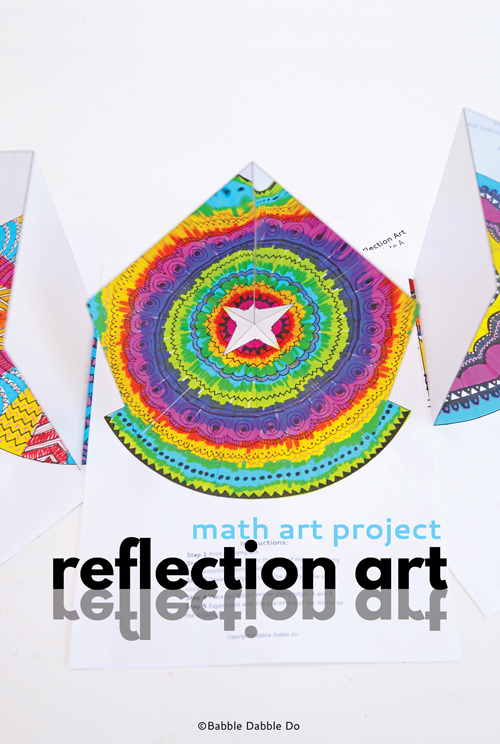

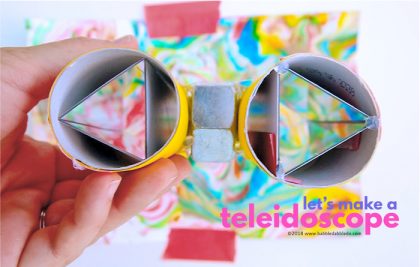
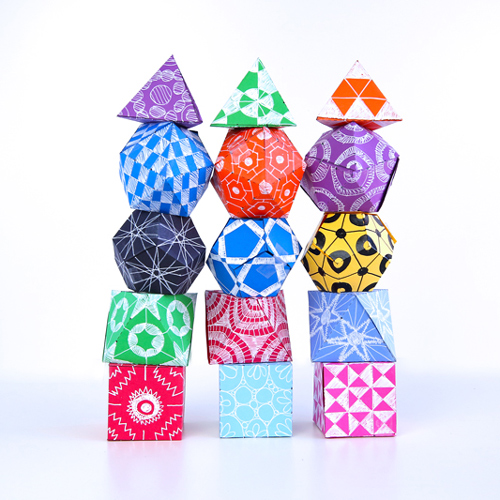
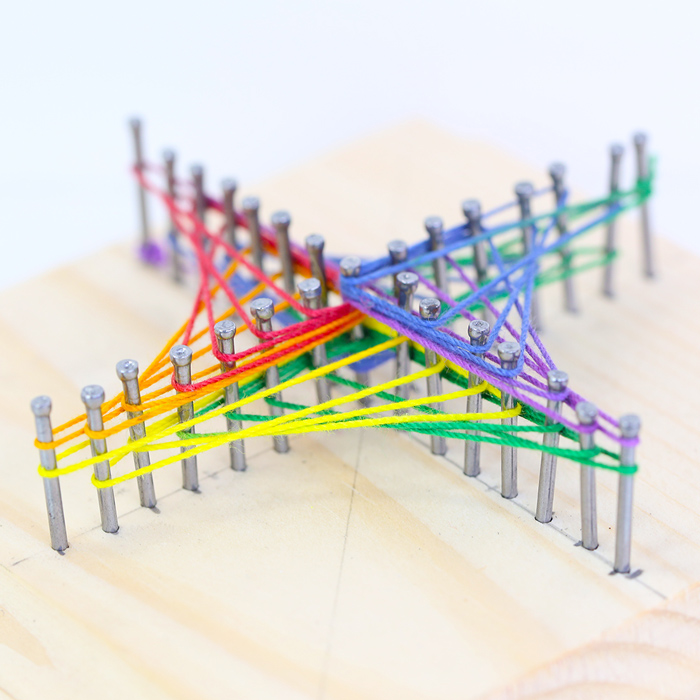
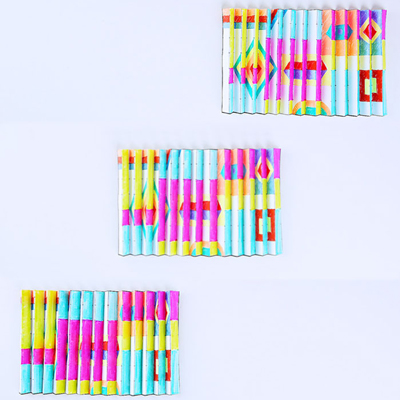
Leave a Reply